Posts Tagged ‘IT’

Microsoft marketing communication mix explains the patterns of use of elements of marketing communication such as advertising, sales promotion, events and experiences, public relations, direct marketing and personal selling by the multinational technology company. Microsoft Print and Media Advertising Print and media advertising is placed at the core of Microsoft marketing strategy. Microsoft print and media advertising expenses amounted to USD 1.6 billion, USD 1.5 billion, and USD 1.6 billion in fiscal years 2018, 2017, and 2016, respectively[1]. As illustrated in figure below, Microsoft’s print and media advertising campaigns make an appeal to needs, wishes and aspirations of target customer segment and positions Microsoft products and services as efficient tools to be used to satisfy them. Example of Microsoft print advertisement Some of Microsoft’s TV advertisements such as “the apps you want” 30-second commercial that promotes unified Windows Store within Windows Phone and Windows 8 have become viral videos in social networking sites mainly due to engaging presentation of information. Moreover, as an unprecedented move the company has placed a Wi-Fi-Enabled print advertising promotion in a special edition of Forbes magazine targeting a selected group of subscribers. Ultra-thin router and battery placed within pages of magazine granted the possibility of free internet browsing for about 3 hours. Moreover, the global technology company has been gradually shifting its focus from traditional media such to the social media and other online platforms. Microsoft Sales Promotions Sales promotion is used by Microsoft in a frequent manner in both store formats – physical and online. Microsoft sales promotions include the following: 1. Seasonal sales promotions. Microsoft offers 12 Days of Faves promotions, during Christmas and New Year holidays. Additional seasonal sales include Black Friday and Cyber Monday. 2. Discount codes. The company offers special education-designated Microsoft coupons for students, parents, faculty, and…

PESTEL is a strategic analytical tool and the acronym stands for political, economic, social, technological, environmental and legal factors. Microsoft PESTEL analysis examines effects of these factors on the bottom line of the multinational technology company. Political Factors in Microsoft PESTEL Analysis There are many political factors within the scope of Microsoft PESTEL analysis at governmental, regional and international levels. Apart from the impact of a regular set of political factors such as political stability in the market, impact of activities of lobby groups and the government attitude towards the organization and the industry, Microsoft activities during the past years have brought upon the company other set of political issues. Most notably, Microsoft has attracted the attention of governments and political parties due to antitrust-related issues. A recent probe by China’s State Administration for Industry and Commerce into the ways Microsoft distributes its Internet Explorer browser and Windows Media Player and sells its Office and Windows software in China[1] can be mentioned as a relevant example of impact of a political factor. Similar to major international corporations, Microsoft engages in political lobbying in order to contribute to the formation of political environment favourable to its business. As illustrated in figure below, the amount of annual political lobbying by Microsoft has ranged between USD 3,92 million and USD 7,25 million during the last 10 years. Annual lobbying by Microsoft Corporation[2] Economic Factors in Microsoft PESTEL Analysis There is a range of economic factors that affect Microsoft revenues directly or indirectly. These include economic growth or recession in the market, changes in interest rates and currency exchange rates, changes in taxation rates and policies, inflation rates, changes of labour costs and costs of other resources and others. Particularly, the global economic and financial crisis of 2007 – 2009 had proved to…
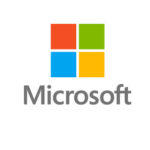
SWOT is an acronym for strengths, weaknesses, opportunities and threats related to organizations. The following table illustrates Microsoft SWOT analysis: Strengths 1. Global leadership in cloud sector 2. Effective leadership by Satya Nadella 3. High profitability of the business and solid financial position 4. The most valuable company in the world 5. Diversified product portfolio Weaknesses 1. Lack of innovation 2. Weak position of Microsoft Edge browser application 3. Occasional technical issues with Windows updates 4. Dependence on hardware manufacturers 5. Security issues of Microsoft products Opportunities 1. Engagement in mergers and acquisitions 2. Developing innovative products and services 3. Focusing on smartphone segment 4. Developing mobile advertising 5. Enhancing security against cybercrime Threats 1. Exchange rate risks 2. Emergence of new competitors 3. Anti-monopoly and other lawsuits 4. Economic crisis 5. Emergence of CSR-related scandals Microsoft SWOT analysis Strengths in Microsoft SWOT Analysis 1. Microsoft is an undisputed leader in global marketplace in cloud segment. The technology giant offers a wide range of cloud-based computing services that include Bing, Microsoft Azure, Microsoft Dynamics CRM Online, Microsoft Office 365, OneDrive, Skype, Xbox Live, and Yammer. In 2018, Microsoft had global datacenter footprint to 54 regions – more than any other cloud provider. In the same year, the revenues of Azure hyperscale cloud grew 91 percent year-over-year. Moreover, Microsoft added nearly 500 new Azure capabilities in 2017 alone.[1] 2. Effective and visionary leadership by Satya Nadella is one of the factors that set apart Microsoft from competition in positive terms. Since taking over from Steve Ballmer as Microsoft CEO in 2014, Nadella has been bold and effective in restructuring and reinvention of the company. Initiatives such as refocusingMicrosoft’s mobile-based efforts and expanding many of its services to be offered on other platforms like Mac introduced by Nadella has proved to be…
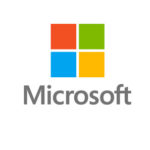
The origins of Microsoft organizational culture have been laid by founders Bill Gates and Paul Allen as an innovative, but performance-obsessed. From its founding in 1972, the technology company became a market leader in a range of segments partially thanks to its corporate culture associated with efficiency and creativity. However, this changed during Steve Ballmer leadership era covering 2000-2014 with negative implications on company’s market share and stock prices. After assuming the top job in 2014, rebooting Microsoft organizational culture was one of the key tasks for the new CEO Satya Nadella. Currently, the global technology company is actively placing One Microsoft concept at the core of its organizational culture. Microsoft organizational culture combines the following three key features. 1. Learn-it-all mentality. Nadella is credited with transforming Microsoft’s historical ‘know-it-all’ culture into ‘learn-it-all’ curiosity.[1] Nowadays, Microsoft corporate culture accepts that no employee can know everything about the industry and their specialty. At the same time, organizational culture at Microsoft encourages its employees at all levels to maintain an open mind towards learning new skills and capabilities that will help them to do their jobs better in a systematic manner. 2. Openness. CEO Satya Nadella told in an interview that anyone should be able to tell him anything and that’s the culture they strive for[2]. Moreover, industry analysts also note that “since chief executive Satya Nadella was appointed in February 2014, Microsoft has become a far more open place”[3] 3. Value for innovation. Under the leadership of former CEO Steve Ballmer, the global technology company was often criticized for the lack of innovations in its product portfolio. Satya Nadella has announced his commitment to change this perception by integrating the values of innovation and creativity into Microsoft organizational culture. 4. Diversity and inclusion. The company attempts to promote the culture of…
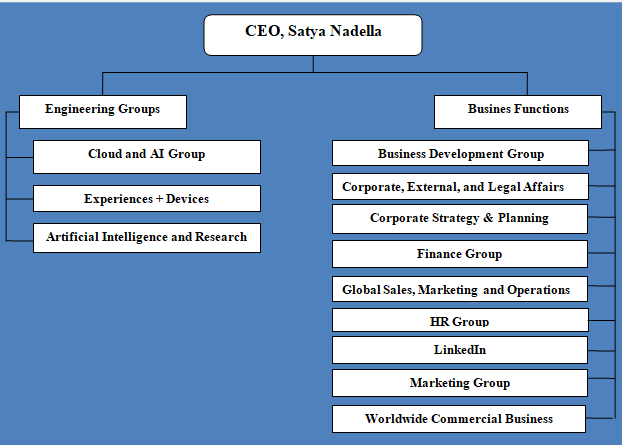
Microsoft organizational structure can be classified as divisional. In June 2015, the senior management announced a change in Microsoft organizational structure to align to its strategic direction as a productivity and platform company. This restructuring initiative resulted in elimination of approximately 7,400 positions in fiscal year 2016.[1] The current divisional pattern of Microsoft organizational structure is the result of this restructuring initiative. As it is illustrated in figure below, Microsoft organizational structure is divided into divisions according to engineering groups and business functions. Specifically, on the basis of engineering groups, the company is divided into three divisions, whereas according to business functions it is divided into 9 divisions: Microsoft Organizational Structure The latest restructuring of Microsoft organizational structure and shift to divisional organizational structure offers the following advantages to the business: Firstly, under the new organizational structure, heads of engineering groups directly report to CEO Satya Nadella with positive implications on new product development initiatives and innovation potential. This is particularly important to be able to introduce new products and services to the marketplace in the short duration of time. Moreover, a clear distinction between engineering groups and business functions, as illustrated in figure above, is an indication of the technology giant ‘s focus on business directions under engineering groups such as cloud and artificial intelligence. Secondly, organizational restructuring eliminates bureaucracy in business processes and procedures to a great extent, increasing the flexibility of the business to adapt to changes in the external marketplace. Thirdly, the initiative resulted in the elimination of approximately 7,400 positions, thus saving considerable amount of financial resources that can be channelled for new product development and increasing the competiveness of the business in many other ways. Another important aspect of corporate culture at Microsoft refers to a high level of dynamism. Specifically, the CEO of…
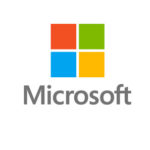
Co-founder of the company, Bill Gates was at the helm of Microsoft leadership since its inception in 1972 until 2000, when Steve Ballmer succeeded him as CEO. While Steve Job’s leadership was rightly regarded as successful, Steve Ballmer was pointed to as the worst CEO of a large publicly traded American company in 2012 by Forbes. This viewpoint is shared by many business analysts and practitioners. It has been noted that Microsoft peaked at USD 60/share in 2000, just as Mr. Ballmer took the reins. By 2002 it had fallen into the USD 20s, and has only rarely made it back to USD30s value, until Ballmer’s replacement by Satya Nadella as CEO in 2014.[1] Currently, Microsoft leadership team comprises 21 members led by CEO Satya Nadella. Specifically, there are 12 executive vice presidents responsible for various critical directions and aspects of the business, along with chief technology officer, chief legal officer and CEO of LinkedIn. Microsoft Board of Directors comprises 14 members, who are experienced senior leaders across a range of industries. Microsoft leadership practices are based on the following principles: 1. Focus on organizational culture. Leadership style exercised by Satya Nadella places a great emphasis on developing and maintaining the right type of organizational culture. Specifically, the leader of the tech giant cultivates the integration ‘learn-it-all’, rather than ‘know-it-all’ mentality into Microsoft organizational culture. 2. Efficiency and practicality. Microsoft leadership at the most senior level has been praised for being practical and CEO Satya Nadella told employees “to stop wasting their times at pointless meetings”[2]. 3. Regular coordination of efforts across the departments and groups. CEO Satya Nadella has 8-hour meeting with his leadership team every month and he runs 4-hour meetings other three weeks.[3] These meetings involve performance review of top executives on the basis of dashboards and…
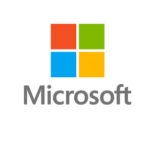
Microsoft business strategy integrates the following 3 elements: 1. “Cloud-first, mobile-first”. Intelligent cloud represents one of the solid sources of Microsoft competitive advantage and Microsoft business strategy places a great emphasis on cloud segment of the business. ‘Mobile first’ part of this strategy stands for the mobility of experiences[1] and the technology giant pays a due attention to this direction as well. Nadella’s bet on cloud has paid off handsomely. By October 2018, Microsoft surprised Amazon in 12-month cloud revenues. Specifically, while Microsoft earned USD 26,7 billion revenues, Amazon’s revenues totalled to only USD 23,4 billion for the same period.[2] 2. Growing through mergers and acquisitions. Mergers and acquisitions play an important role in Microsoft business strategy and the multinational technology company engages in mergers and acquisitions to increase its capabilities, product range and value offering. The list of the most notable recent acquisitions include Nokia Corporation’s Devices and Services business for USD 9.4 billion in 2014 and Mojang Synergies AB the Swedish video game developer of the Minecraft gaming franchise, for USD 2.5 billion.[3] Moreover, in June 2016, Microsoft acquired LinkedIn for USD 196 per share in an all-cash transaction valued at USD 26.2 billion.[4] This particular acquisition plays an instrumental role to connect the world’s professional cloud and the world’s professional network – creating new experiences and new value for business users. With more than 1.2 billion Office users and 433 million LinkedIn members, the combined data graphs is expected to improve how Sales, HR, and other professionals get work done.[5] In 2018 alone, Microsoft completed 16 acquisitions of companies ranging from video games producers to artificial intelligence to employee engagement. 3. Focusing on augmented and virtual reality (VR). CEO Satya Nadella has placed augmented and virtual reality at the core of Microsoft business strategy. It has been noted…

Since the appointment of Satya Nadella as CEO, Microsoft marketing strategy has changed to become less ‘hostile’ abandoning kinds of advertising that ‘attacked’ competitors in a direct manner. For example, a marketing campaign known as ‘Scroogled!’ launched in 2012 informed about Google’s decision to display paid advertisements to search results related to shopping. ‘Scroogled’ was launched to ensure the shift of some Google users to use Microsoft’s Bing search engine, but Nadella stopped this and some other similar campaigns as an attempt to improve the image of the company.[1] ‘Scroogled’ marketing campaign as illustration of old-style Microsoft marketing strategy In other words, since his appointment on the top job, Satya Nadella has been focusing on humanising the brand and taking a customer-centric approach with direct implications on the marketing strategy of Microsoft. Microsoft sales and marketing expenses amounted to USD 17,469 billion, USD 15,461 billion and USD 14,635 billion for the fiscal years of 2018, 2017 and 2016 respectively . In 2018 the tech giant’s sales and marketing expenses increased USD2.0 billion or 13% compared to the previous year.[2] Microsoft marketing strategy is based on the following principles: 1. Investing in the communication of marketing message through various marketing communication channels in an integrated manner. The technology giant uses a range of marketing communication channels such as advertising, sales promotion, events and experiences, public relations, direct marketing and personal selling in an integrated way to communicate its marketing message to its target customer segment. 2. Focus on product element of the marketing mix. Microsoft 7Ps of marketing focuses on the product element of the marketing mix to a greater extent compared to other elements. Accordingly, the multinational technology company has accepted high level of user convenience of its products and services as unique selling proposition associated with the brand. 3.…
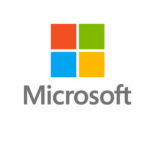
Microsoft marketing mix (Microsoft 7Ps of marketing) comprises elements of the marketing mix that consists of product, place, price, promotion, process, people and physical evidence. The multinational technology company manipulates with elements of the marketing mix according to its marketing strategy, as a part of its business strategy. Product Element in Microsoft Marketing Mix The majority of Microsoft’s products relate to productivity and business processes and to support digital work and life of customers. The company also builds the platforms upon which others build their own digital platforms. Some of Microsoft products are clear leaders in the global marketplace. For example, more than 135 million people use Office 365 commercial every month and Outlook Mobile is installed into more than 100 million iOS and Android devices worldwide.[1] Similarly, Microsoft Teams is used by more than 300 organizations worldwide, including 87 of the Fortune 100 and nowadays there are nearly 700 million devices around the world with active Windows 10.[2] Generally, Microsoft products and services can be divided into three broad categories as illustrated in table below: Category Products and services Productivity and Business Processes Microsoft 365, SharePoint, Skype for Business, Outlook Mobile, One Drive, Dynamics 365, Microsoft Teams, Linked In Intelligent Cloud Server products and cloud services, including SQL Server, Windows Server, Visual Studio, System Center, and related CALs, as well as Azure Enterprise Services, including Premier Support Services and Microsoft Consulting Services More Personal Computing Windows Devices, including Microsoft Surface (“Surface”), phones, and PC accessories. Gaming, including Xbox hardware; Xbox Live, Search advertising. Microsoft product categories and products Place element in Microsoft Marketing Mix Microsoft sells its products and services through the following three channels: 1. Official website: www.microsoftstore.com/store. Microsoft online store is a convenient platform where customers can choose products and services according to categories such as…
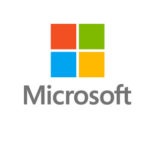
Microsoft segmentation, targeting and positioning can be explained as a set of activities that constitute the core of marketing efforts for the multinational technology company. Segmentation involves dividing population into groups on the basis of certain characteristics. Businesses focus on certain customer segments and position their products and services to satisfy needs and wants of these particular segments. Microsoft uses the following types of positioning: a) Multi-segment positioning. The company targets more than one customer segments at the same time with different product and service packages. For example, Dynamics 365, a software for building and supporting customer relationships starts with USD 115/month Customer Engagement Plan for cost-conscious customer segment. Unified Operations Plan starting from USD 190/month, on the other hand is developed for a different customer segment that do not mind to pay extra for additional set of functions and features within Dynamics 365. b) Standby positioning. Standby positioning technique involves the development of products and services that can await changes in the market to find demand in the future. When Microsoft announced its ‘cloud-first, mobile-first’ business strategy in 2014, cloud data storage was a new segment. CEO Satya Nadella saw a potential in cloud business, focused on the development of cloud services using standby positioning technique. The demand for cloud consistently increased and in Q2, 2018 alone, Microsoft commercial cloud revenues reached USD 6.9 billion, a growth of 53% compared to the previous period.[1] The following table illustrates Microsoft segmentation, targeting and positioning: Type of segmentation Segmentation criteria Microsoft target customer segment Geographic Region Global marketplace Density Urban and rural Demographic Age 16 and older Gender Males & Females Life-cycle stage Bachelor Stage young, single people not living at home Newly Married Couples young, no children Full Nest I youngest child under six Full Nest…
